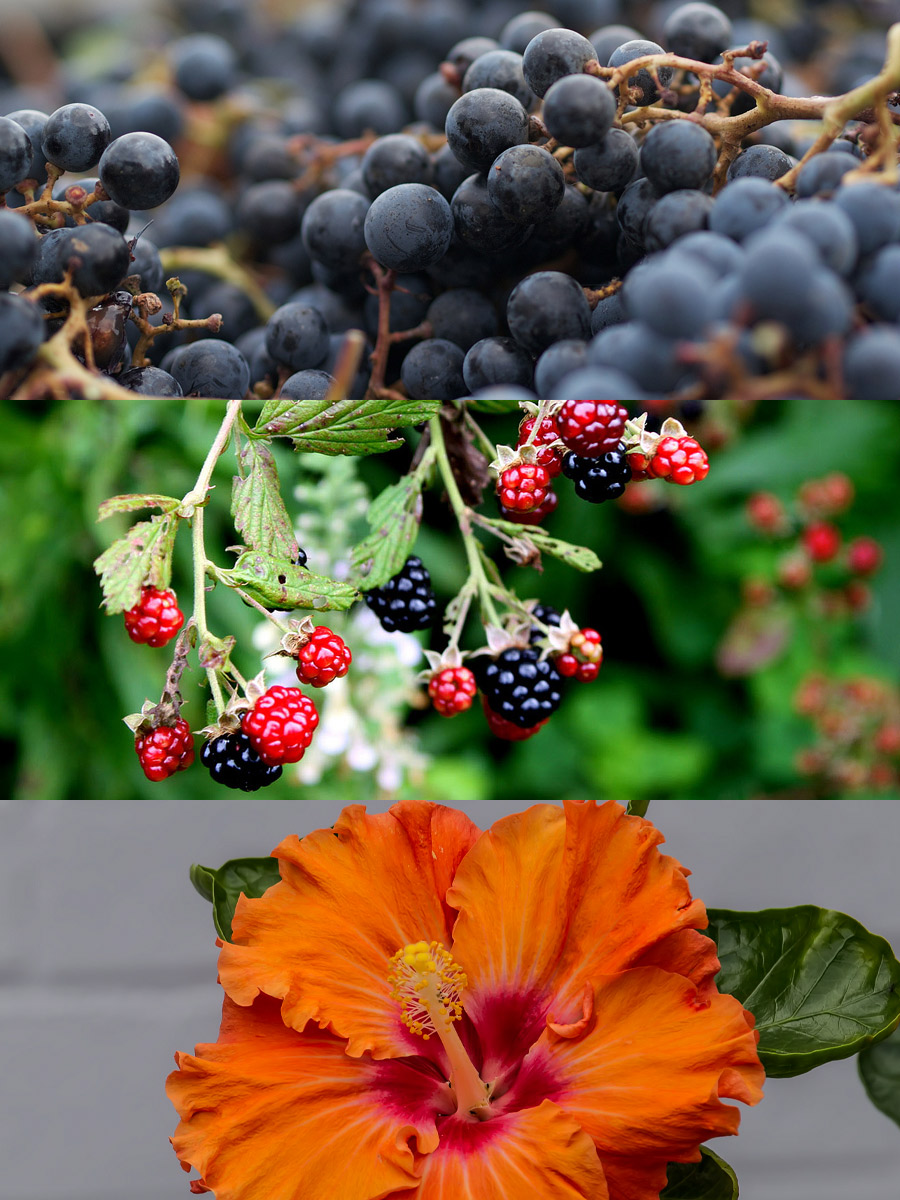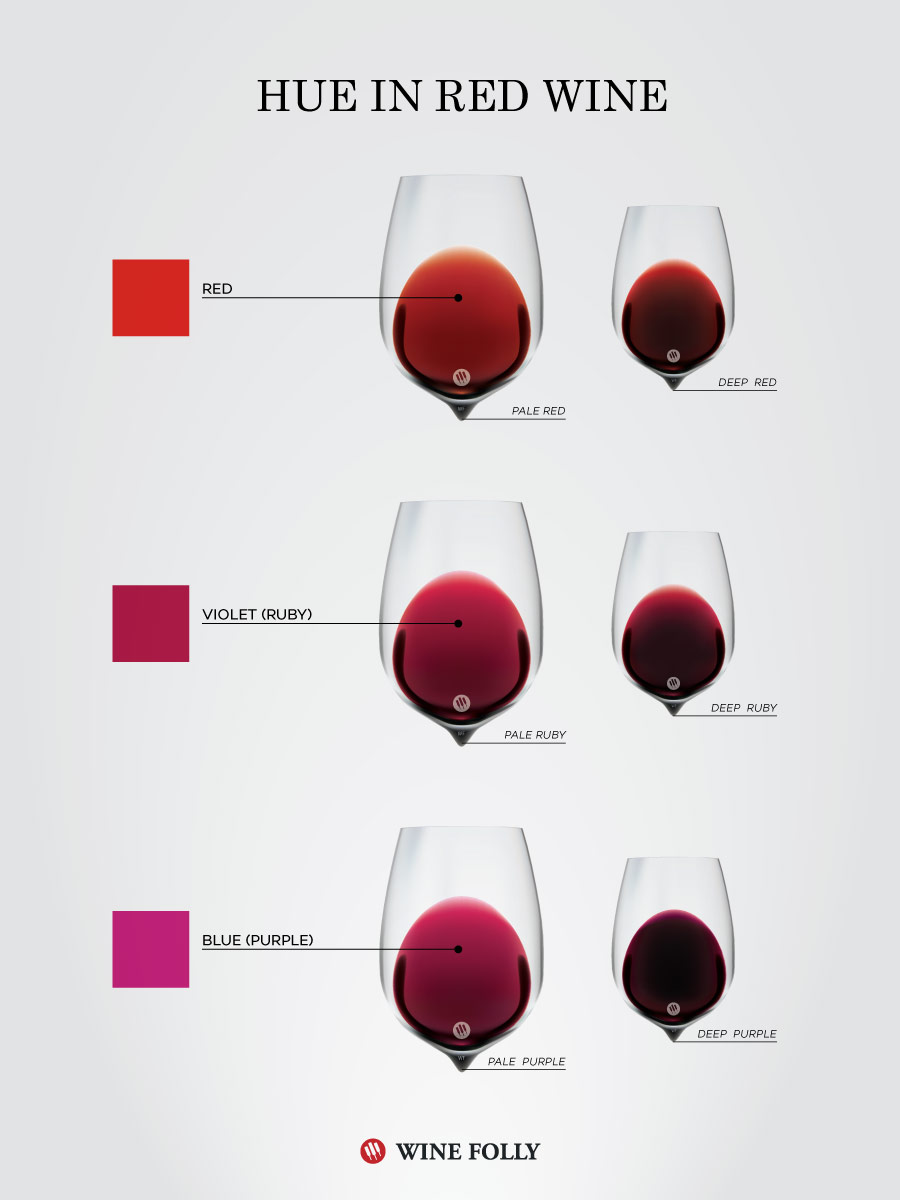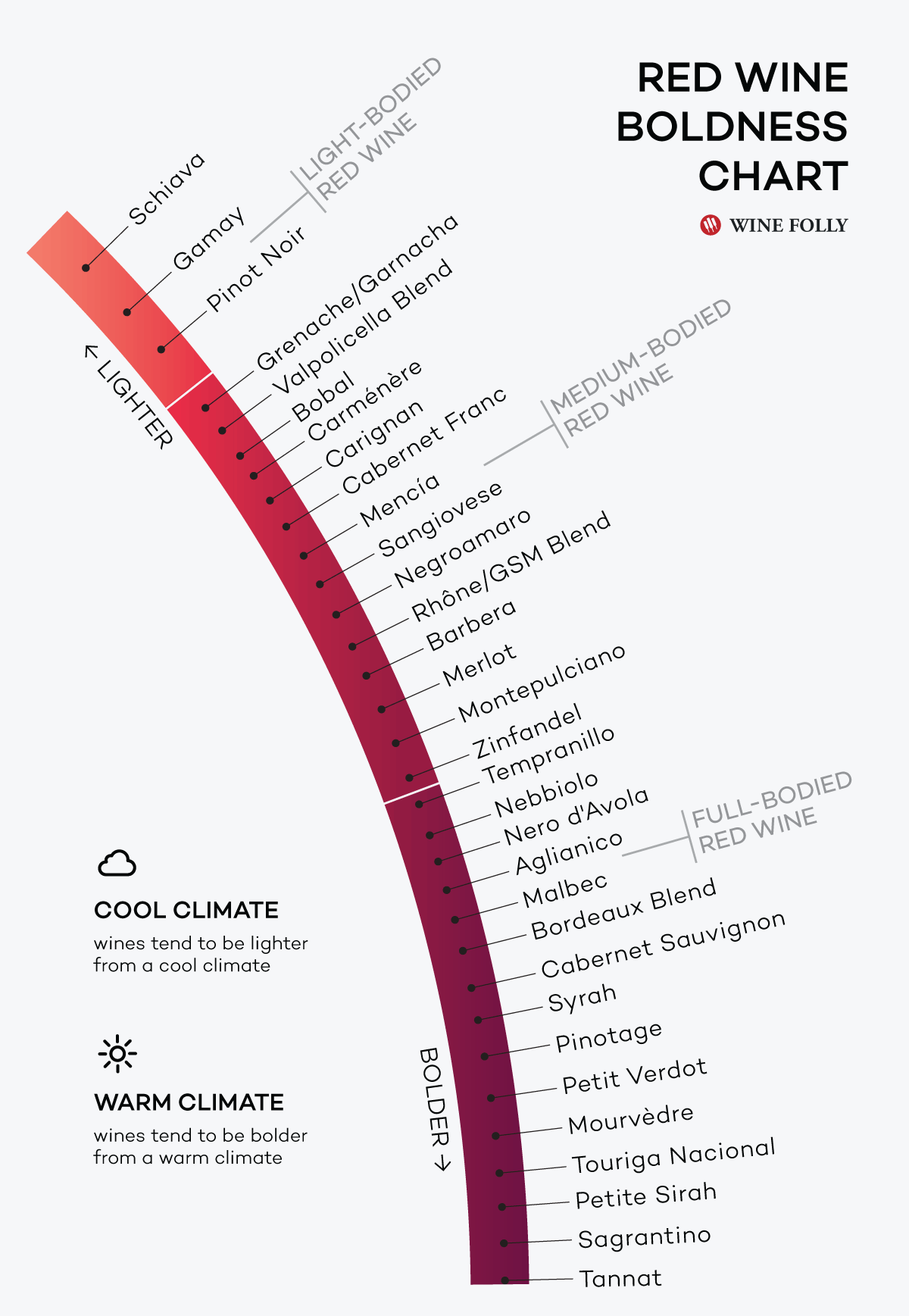There are some fascinating insights you can gain by looking at the color of red wine. Here are a few secrets behind the color pigment in red wine that provide clues towards wine quality.

Where does the red color in wine come from?
The red color in wine comes from a pigment called anthocyanin. Anthocyanin is present in many other fruits, including plums, blueberries, and cherries. You can also observe it in flowers (like orchids, hydrangeas, etc.).
The pigment in red wine comes from the skins of grapes. By soaking the skins in the juice, anthocyanin is released and it literally stains the wine.
Different red varieties produce different levels and expressions of this group of pigment compounds, making the science behind it very complex. Fortunately, there are a few delightfully simple observations we can make.

What red wine hue tells us
If you look at a red wine under natural lighting conditions and over a white background, you’ll get a pretty accurate impression of its hue. It might be difficult to see at first, but young red wines (under 5 years) range in hue from red, to violet, to blue. You can see this hue by looking towards the edge of the wine as it hits the glass.
- Wines with more red colored hue have a lower pH (high acidity).
- Wines with a violet colored hue range from around 3.4–3.6 pH (on average).
- Wines with a more blueish tint (almost like magenta) are over 3.6 pH and possibly closer to 4 (low acidity).
Of course, each red grape variety expresses color a little bit differently and there are many variables that will affect the color (variables such as co-pigmentation, sulfur additions, etc.), but the above is generally true!
Examples
- Malbec: A highly tinted red wine that, when produced in a soft and lush style, often has a magenta (blue) tint on the rim of the glass.
- Sangiovese: A less tinted red wine (often translucent) that’s spicy character is partially explained by high acidity, which you can see in its brilliant red color.

What the intensity tells us:
The intensity of color can be observed with the wine’s opacity. Deeply opaque red wines have been noted for having more pigment and phenolics than more translucent red wines. For example, Syrah has as much as 4 times more pigment (antioxidants) than Zinfandel. There are a few features you can observe that are generally true with color intensity:
- Different grape varieties have different levels of intensity. For example, Gamay is very low and Pinotage has exceptionally high levels of pigmentation.
- Color intensity can be amplified by other polyphenols (e.g. tannin) in wine. Thus, wines that are more opaque may also contain higher levels of tannin.
- The pigment in red wine is sensitive to both temperature and sulfites. Wines that are fermented at high temperatures or have higher sulfur additions will have less color intensity.
- Wines lose pigment as they age. As much as 85% of the anthocyanin is lost after 5 years
Try it out!
Next time you stare into a glass of wine, try to identify the wine’s hue and intensity and see if the wine’s characteristics reflect its appearance.
Color of Wine Poster
Color of Wine is available as an 18×24 inch lithographic print. Printed on Forest Stewardship Council certified paper in Seattle, WA, USA and color corrected to sommelier standards. Poster ships internationally from Wine Folly.
